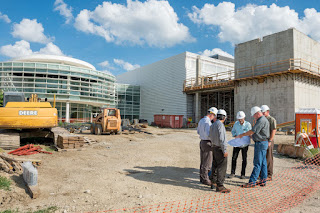Topics: Applied Physics, Big Bang, Carl Sagan, Research
The clean room has an interesting history. In this recap on Space.com by Miriam Kramer (April 21, 2014, excerpt below):
The scientist who discovered the age of the Earth also helped end the use of lead in gasoline and other products in the United States.
Sunday night's episode (April 20) of "Cosmos: A Spacetime Odyssey" explored the life of Clair Patterson, a geochemist who pinpointed Earth's age for the first time and also uncovered a secret: Lead contamination is a major and potentially deadly problem. The newest episode of "Cosmos," called "The Clean Room," takes viewers on a tour of Patterson's work and the industry that fought him as he tried to learn more about lead and its harmful effects.
You can see more at the link. I have an "affection" for clean rooms (obviously) due to spending a considerable amount of time in them for things like your I-Phone, your I-Pad; your game platform, your GPS...etc.
| Moi... |
I guess I shouldn't be amazed that a facility first built to estimate the age of the Earth, then suddenly find out about lead poisoning in gasoline could also be used in clearly more imaginative ways. Clean rooms are used by NASA and ESA to assemble spacecraft prior to launch. It's almost poetic that they would have a usage on Earth to peer at the very epoch of the universe itself.
It takes a very, very clean room to build a detector sensitive enough to see the light from the beginning of the universe.
Work is underway at the U.S. Department of Energy's (DOE's) Argonne National Laboratory on a new "clean room." The new lab will be specially suited for building parts for ultra-sensitive detectors — such as those to carry out improved X-ray research, or for the South Pole Telescope to search for light from the early days of the universe.
"This will be a unique facility, and a wonderful investment for the future of the laboratory," said Supratik Guha, who heads the Center for Nanoscale Materials, a DOE Office of Science User Facility adjacent to where the new space will be located.
“We are a way for the cosmos to know itself.”
― Carl Sagan, Cosmos
Argonne National Laboratories:
Building a room clean enough to make sensors to find light from the birth of the universe
Louise Lerner

Comments